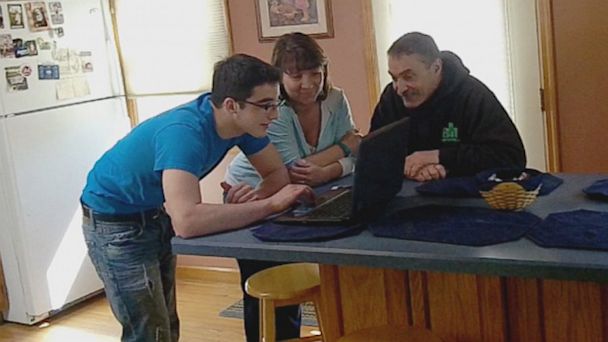3 Tips to Ensure Back-to-College Shopping Doesn't Break the Bank

ABC News
ABC News' Paula Faris reports:
Just days away from leaving his family's nest in Vienna, N.J., for his freshman year in college, Tyler Kozimor is quickly finding out that heading back to school means diving into the bank account.
ABC News originally met up with Kozimor in April after he'd received word that he'd gotten into his dream school - Ithaca College - to wrestle and study broadcasting. His original financial-aid package wasn't enough, so the "Real Money" team helped him reapply and found him an extra $30,000.
Missed the 'Real Money' story? Here are the tips to negotiate financial aid for college.
The Kozimors said they were surprised at the cost of just getting to school. New bedding, a minifridge, laptop and textbooks can all add up.
"You think it's just the tuition," Tyler Kozimor said. "It's like you have to re-buy your whole life. … [It's] very expensive."
According to the National Retail Federation, college students and their families will spend nearly $46 billion, an average of $836.83 per family, on back-to-college supplies this year. And the average, estimated, full-time undergraduate budget - including books and supplies, transportation and dorm expenses - totals $3,291.
Lynnette Khalfani Cox, author of " Zero Debt for College Grads," said sending kids to college shouldn't send parents over the financial deep end. She shared the following tips with the Kozimors and ABC News to help them save thousands of dollars a year on their back-to-school shopping lists.
1. For big-ticket items, prices can change minute-to-minute. At Decide, you can track products like laptops. And comparison sites like Priceblink, which attaches to your browser as you search the Web, can help ensure you get the best price. To find out whether your favorite store has any sales, use apps like Shopkick. It rewards shoppers with exclusive deals just for walking into retailers like Target.
"You'll literally see rows and rows of stuff saying 'college,' which makes you think 'Oh, OK, my kid must need this for college, right?'" Cox said. "Well, not necessarily."
A minifridge was found for $129 at Walmart, $139 at Staples and $169 on Amazon. It was also on sale for $119 at Best Buy but on Priceblink, Cox showed Kozimor that the item could be purchased at Shopko for $98.88 and with free shipping right to his dorm.
2. Consider buying used textbooks on Amazon and renting textbooks at Rent-a-Text for 40 percent to 70 percent off. And for intro classes, use the website Boundless, which matches assigned books with free versions online.
3. Finally, avoid the campus bookstore, where prices can be marked up 40 percent, and leave your car at home if you live on campus. On average, Cox said, college students save $200 a month on gas by keeping their cars with their parents.
"I'm ready to go to college," Tyler Kozimor said. "Thank you, guys!"